-
Factors to be considered in the design of road guardrails
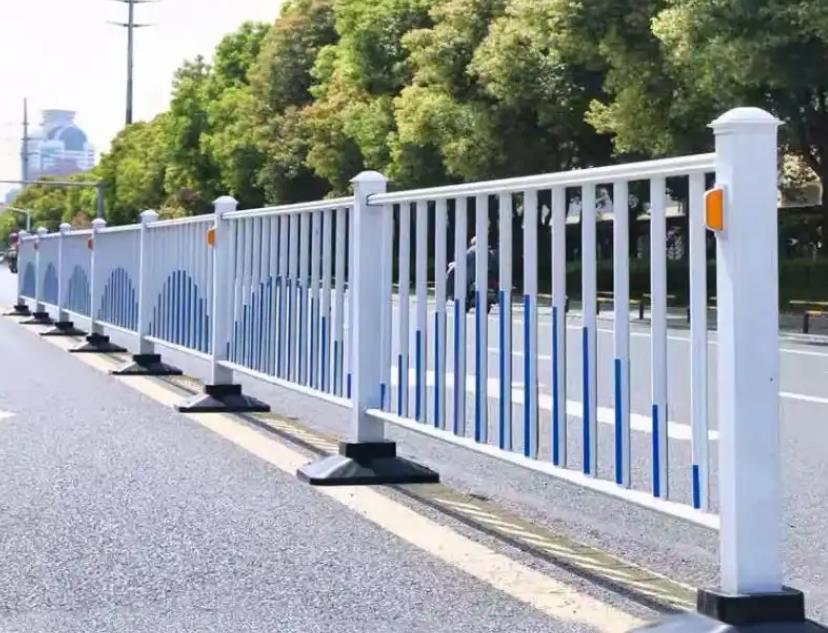
Hot Factors to be considered in the design of road guardrails
MoreNowadays, the design of road guardrails is also very particular. So, what factors should we consider in the design? Today, we will talk about the factors that need to be considered in the design of road guardrails. We hope our introduction can be helpful for everyone in their future lives. Let's take a closer look at this information. Let's take a look together!
What factors should be considered in the design of road guardrails?
(1) Galvanized design: As we all know, road guardrails are coated with a layer of zinc, which not only provides protection but also extends the service life of the guardrail. The durable coating of galvanized design consists of hot-dip zinc layer, zinc rich phosphating layer, organic zinc rich epoxy powder coating, and polyester "flawless" color powder coating. It requires good surface treatment technology and advanced specialized equipment to scientifically and reasonably combine the four protective layers, endowing municipal guardrails with excellent corrosion resistance, good moisture resistance, chemical resistance, and strong UV stability.
(2) Color function design: In fact, the color elements of road guardrails are also very important. In order to meet the needs of traffic safety and smooth roads, green is changed from green to blue on the basis of current traffic colors of red, white, yellow, green, and black, forming five basic colors of red, blue, white, yellow, and black. Various combination colors related to direction, driving rules, and warnings are designed and configured on municipal traffic guardrails to enrich the concise and clear characteristics of urban traffic language, which can be easily understood at a glance.
-
Set up some speed reduction signs on the road surface with cast steel speed bumps
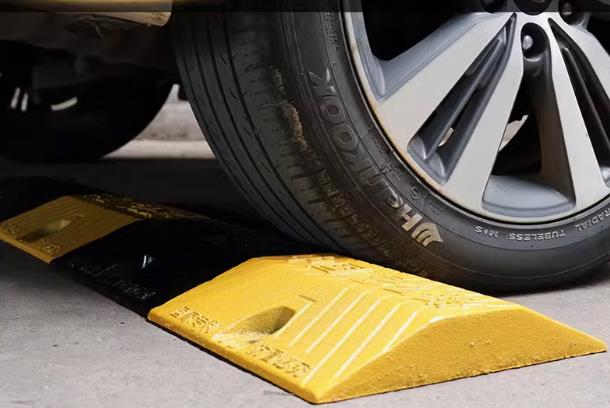
Hot Set up some speed reduction signs on the road surface with cast steel speed bumps
MoreCast steel speed bumps are installed on the road surface with some speed reduction signs. Gas station vehicles frequently appear, so speed limit signs, collision barriers, speed reduction zones and other facilities will be set up at the station to remind the station to slow down and protect the safety of personnel and equipment. Especially, it is necessary to install speed reduction gas stations. So, we will further discuss this topic on which speed reduction zone to choose and which suitable location to install. Below, I will share some of your opinions to explore. Many driving friends often encounter different types of deceleration zones, and there are mainly the following types of cast steel speed bumps:
1. Cast steel speed bumps, commonly found at village intersections, have low construction costs but are on the high side with low color rendering. The color is similar to the road surface and visually unclear, causing emergency braking, jolting, and even hitting the chassis when driving in front. 2, Cast steel speed bumps are commonly found in workplace squares, residential areas, and other places, with a height of about 5 centimeters above the ground. They are generally fixed to the ground with M12X14 sleeve expansion screws, which are yellow and black in color, visually obvious, and not expensive. However, their service life is short, and rubber speed bumps are often exposed from screws and long screws, which can easily damage tires. To replace the ground, a new speed bump needs to be repaired and fixed to the ground.
3. Cast steel speed bumps are commonly found at highway intersections, toll stations, and other places. Rubber speed bumps with better service life are superior to rubber speed bumps, but their price is much higher.
4. Paving bricks in point like deceleration zones are commonly found on highways, urban roads, and other fast roads. This type of deceleration is slightly higher than that of roads, forming a film and generally using glass bead primer and paint. They are beautiful, wearable, and have visibility at night. When vehicles walk on them, they emit a strange whistle sound to remind drivers to slow down.
5. Reflective hot melt marking speed reduction zone. Just like the difference in speed reduction compared to the same material, the production process is different from that of a cross highway strip. There is a distance between each line, with intermittent vibrations above to remind drivers to slow down.
-
Urban guardrails play a very important role in cities
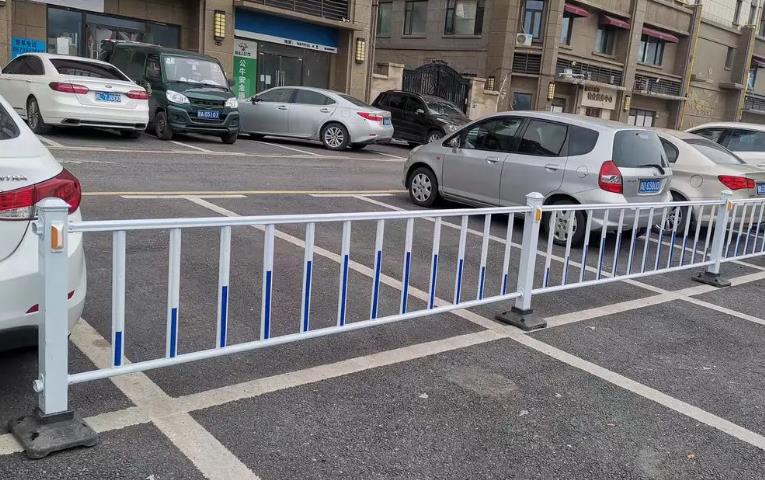
Hot Urban guardrails play a very important role in cities
MoreWith the improvement of people's living standards, private cars are becoming increasingly popular. Nowadays, traffic safety has become a killer on the road, and the installation of guardrails has become a practical defense method!
In fact, the installation of urban guardrails greatly reduces the incidence of traffic accidents and lowers the safety of residents' travel. Highway guardrails have become various types of highway guardrails. According to stiffness, it can be divided into flexible guardrails, semi-rigid guardrails, and rigid guardrails.
Flexible guardrails generally refer to hard guardrail structures with significant buffering capacity. This is a structure fixed on a pillar by several steel cables with initial tension. It mainly relies on the tensile stress of the cable to resist collisions and absorb the energy of the vehicle. The cable works within the elastic range and basically does not need to be replaced. This type of guardrail has a beautiful appearance and no sense of pressure when driving, but its visual guidance effect is poor.
Semi rigid guardrails generally refer to continuous beam column guardrail structures. This is a beam structure with fixed pillars that relies on the bending deformation and tension of the guardrail to resist vehicle collisions. According to their different structures, beam guardrails can be divided into W-shaped corrugated beam guardrails, pipe beam guardrails, and box beam guardrails. They all have a certain degree of stiffness and toughness. They absorb collision energy through the deformation of the light beam. Damaged parts are easy to replace. Has a certain visual induction effect and a beautiful appearance.
Rigid guardrail generally refers to a basic non deformable guardrail structure. This is a concrete wall structure with a certain cross-sectional shape that absorbs collision energy through car climbing, deformation, and friction. Rigid guardrails do not deform during collisions, are almost undamaged, and have low maintenance costs, but they can create a sense of pressure on the vehicle's movement. It is easy to snow when used in cold regions.
After the installation of urban guardrails, zinc rich epoxy powder and UV resistant polyester powder are sprayed on the surface protective layer of highway and railway guardrails, forming a "long-lasting" coating. Its anti-corrosion ability is several tens of times that of other coatings and single-layer powder coatings, which belongs to high-tech content and is one of the highest in the world today.
-
Factors to be considered in the design of road guardrails

Factors to be considered in the design of road guardrails
Nowadays, the design of road guardrails is also very particular. So, what factors should we consider in the design? Today, we will talk about the factors that need to be considered in the design of road guardrails. We hope our introduction can be helpful for everyone in their future lives. Let's take a closer look at this information. Let's take a look together!
What factors should be considered in the design of road guardrails?
(1) Galvanized design: As we all know, road guardrails are coated with a layer of zinc, which not only provides protection but also extends the service life of the guardrail. The durable coating of galvanized design consists of hot-dip zinc layer, zinc rich phosphating layer, organic zinc rich epoxy powder coating, and polyester "flawless" color powder coating. It requires good surface treatment technology and advanced specialized equipment to scientifically and reasonably combine the four protective layers, endowing municipal guardrails with excellent corrosion resistance, good moisture resistance, chemical resistance, and strong UV stability.
(2) Color function design: In fact, the color elements of road guardrails are also very important. In order to meet the needs of traffic safety and smooth roads, green is changed from green to blue on the basis of current traffic colors of red, white, yellow, green, and black, forming five basic colors of red, blue, white, yellow, and black. Various combination colors related to direction, driving rules, and warnings are designed and configured on municipal traffic guardrails to enrich the concise and clear characteristics of urban traffic language, which can be easily understood at a glance.
2024.12.04MORE+ -
Set up some speed reduction signs on the road surface with cast steel speed bumps

Set up some speed reduction signs on the road surface with cast steel speed bumps
Cast steel speed bumps are installed on the road surface with some speed reduction signs. Gas station vehicles frequently appear, so speed limit signs, collision barriers, speed reduction zones and other facilities will be set up at the station to remind the station to slow down and protect the safety of personnel and equipment. Especially, it is necessary to install speed reduction gas stations. So, we will further discuss this topic on which speed reduction zone to choose and which suitable location to install. Below, I will share some of your opinions to explore. Many driving friends often encounter different types of deceleration zones, and there are mainly the following types of cast steel speed bumps:
1. Cast steel speed bumps, commonly found at village intersections, have low construction costs but are on the high side with low color rendering. The color is similar to the road surface and visually unclear, causing emergency braking, jolting, and even hitting the chassis when driving in front. 2, Cast steel speed bumps are commonly found in workplace squares, residential areas, and other places, with a height of about 5 centimeters above the ground. They are generally fixed to the ground with M12X14 sleeve expansion screws, which are yellow and black in color, visually obvious, and not expensive. However, their service life is short, and rubber speed bumps are often exposed from screws and long screws, which can easily damage tires. To replace the ground, a new speed bump needs to be repaired and fixed to the ground.
3. Cast steel speed bumps are commonly found at highway intersections, toll stations, and other places. Rubber speed bumps with better service life are superior to rubber speed bumps, but their price is much higher.
4. Paving bricks in point like deceleration zones are commonly found on highways, urban roads, and other fast roads. This type of deceleration is slightly higher than that of roads, forming a film and generally using glass bead primer and paint. They are beautiful, wearable, and have visibility at night. When vehicles walk on them, they emit a strange whistle sound to remind drivers to slow down.
5. Reflective hot melt marking speed reduction zone. Just like the difference in speed reduction compared to the same material, the production process is different from that of a cross highway strip. There is a distance between each line, with intermittent vibrations above to remind drivers to slow down.
2024.12.04MORE+ -
Urban guardrails play a very important role in cities

Urban guardrails play a very important role in cities
With the improvement of people's living standards, private cars are becoming increasingly popular. Nowadays, traffic safety has become a killer on the road, and the installation of guardrails has become a practical defense method!
In fact, the installation of urban guardrails greatly reduces the incidence of traffic accidents and lowers the safety of residents' travel. Highway guardrails have become various types of highway guardrails. According to stiffness, it can be divided into flexible guardrails, semi-rigid guardrails, and rigid guardrails.
Flexible guardrails generally refer to hard guardrail structures with significant buffering capacity. This is a structure fixed on a pillar by several steel cables with initial tension. It mainly relies on the tensile stress of the cable to resist collisions and absorb the energy of the vehicle. The cable works within the elastic range and basically does not need to be replaced. This type of guardrail has a beautiful appearance and no sense of pressure when driving, but its visual guidance effect is poor.
Semi rigid guardrails generally refer to continuous beam column guardrail structures. This is a beam structure with fixed pillars that relies on the bending deformation and tension of the guardrail to resist vehicle collisions. According to their different structures, beam guardrails can be divided into W-shaped corrugated beam guardrails, pipe beam guardrails, and box beam guardrails. They all have a certain degree of stiffness and toughness. They absorb collision energy through the deformation of the light beam. Damaged parts are easy to replace. Has a certain visual induction effect and a beautiful appearance.
Rigid guardrail generally refers to a basic non deformable guardrail structure. This is a concrete wall structure with a certain cross-sectional shape that absorbs collision energy through car climbing, deformation, and friction. Rigid guardrails do not deform during collisions, are almost undamaged, and have low maintenance costs, but they can create a sense of pressure on the vehicle's movement. It is easy to snow when used in cold regions.
After the installation of urban guardrails, zinc rich epoxy powder and UV resistant polyester powder are sprayed on the surface protective layer of highway and railway guardrails, forming a "long-lasting" coating. Its anti-corrosion ability is several tens of times that of other coatings and single-layer powder coatings, which belongs to high-tech content and is one of the highest in the world today.
2024.12.04MORE+ -
The role of iron horse guardrails in traffic safety
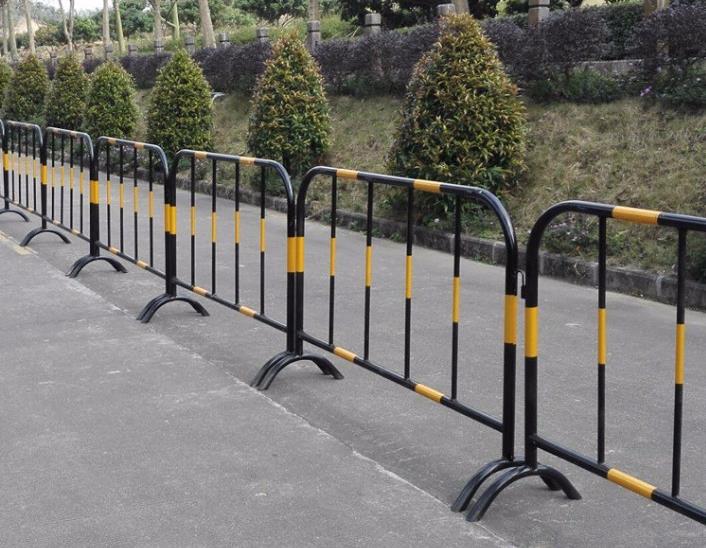
The role of iron horse guardrails in traffic safety
We often see that in some cities, there is nothing in the middle of the road, and some vehicles will turn around and turn at will, posing a great threat to traffic safety. Since the emergence of municipal iron horse guardrails, this has been effectively prevented from happening, and for municipal departments, it has made work very simple.
Why do you say that? The main reason is that the current municipal iron fence can effectively meet the safety needs of roads and to a large extent, regulate traffic safety. In addition, there are various types of iron horse guardrails nowadays, so when municipal companies carry out construction, no matter what kind of road they are on or what kind of guardrail they need, they can make certain choices according to their own needs. Because nowadays, guardrails of any material and specification can exist, providing more choices for municipal companies.
So, the iron horse guardrail not only ensures the safety of people's road traffic, but also provides more convenience for municipal work. It is precisely because of such iron horse guardrails that our lives can become more beautiful.
2024.12.04MORE+ -
What are the factors that cause damage to highway guardrails?
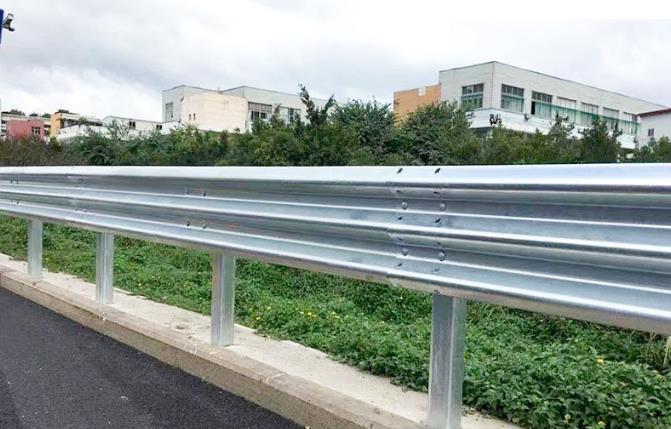
What are the factors that cause damage to highway guardrails?
Highway guardrails are a common and important facility on highways, which can reduce the losses caused by accidents and protect the safety of passengers in case of accidents.
So, the maintenance and replacement of guardrails is also an extremely important task. So, what are the reasons for the damage of highway guardrails?
There are two main reasons for the damage of highway guardrails:
Natural factors
The highway guardrail panels are installed on both sides of the road and are subjected to harsh weather conditions, resulting in varying degrees of damage and oxidation rust on the surface of the guardrail panels. When the guardrail board rusts, it accelerates the rate of secondary oxidation, greatly reducing the service life of the guardrail board.
Human factors
When a vehicle collides with it, due to the excellent collision resistance and energy absorption of the corrugated steel guardrail on the highway, it is not easily damaged and can provide good protection for the vehicle and passengers. When road maintenance or other reasons require merging, it is convenient to pull out and remove the various guardrail columns at the opening to open a passage for vehicle traffic. Guardrail boards not only protect the safety of vehicles and personnel, but also cause corresponding damage to highway guardrails.
Therefore, after the installation of the guardrail board on the road, regular maintenance and repair should be carried out to effectively ensure the extension of the guardrail board's service life.
2024.12.04MORE+ -
Characteristics and functions of steel pipe car stopper
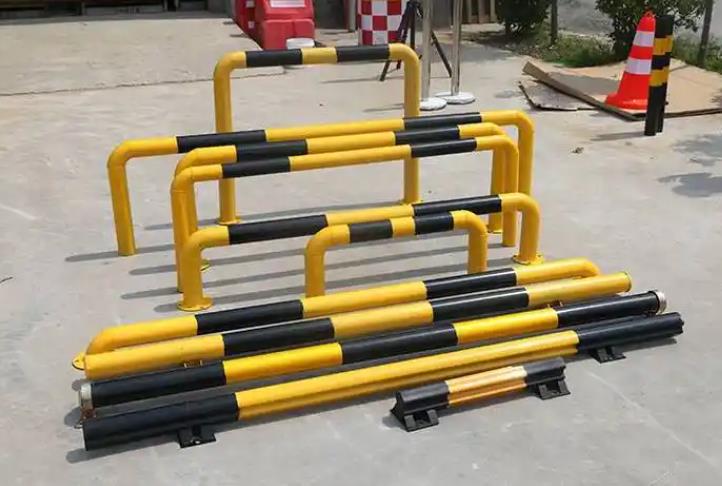
Characteristics and functions of steel pipe car stopper
Product Features
Steel pipe car stopper, also known as triangular car stopper, is made of thickened steel welded together, with yellow reflective strips on both sides, forming a sharp warning contrast with the black paint surface. There are two fixing points on both sides, and the bottom force surface is wide, with good stability. It is a practical car stopper with high cost-effectiveness, generally used in large external parking lots, community garages or underground parking lots, special parking spaces for unit factory vehicles, outdoor parking spaces and other vehicle parking spaces.
Product Features
1. Made of high-strength steel pipes, it has good anti-collision and compressive performance.
2. The surface is covered with a wear-resistant, high reflective brightness yellow shaped reflective film, making the wheel locator particularly eye-catching and reflective, achieving a warning effect;
3. Special craftsmanship ensures long-lasting color, resistance to fading, and a beautiful and elegant appearance;
4. The installation is stable, and the vehicle will not move or deform during impact, effectively regulating parking order;
5. Easy to install and maintain.
2024.12.04MORE+











